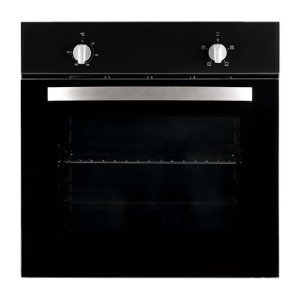
Best Single Fan Oven
Add a review FollowOverview
-
Sectors Facebook Follow
Company Description
How Single Built In Oven Has Become The Most Sought-After Trend In 2024
The Comprehensive Guide to Single Built-In Ovens: Features, Benefits, and FAQs
Introduction
In contemporary kitchens, the integration of devices is crucial to accomplishing a streamlined style. Among these home appliances, the built-in oven sticks out as a staple for daily cooking. In particular, single built-in ovens are gaining popularity due to their space-saving design and effectiveness. This short article checks out the functions, advantages, and commonly asked questions about single built-in ovens, helping property owners make informed options.
What is a Single Built-In Oven?
A single built-in oven is a cooking appliance created to be embedded within cabinetry, supplying a smooth look that matches the kitchen’s visual. Unlike freestanding ovens, built-in variants offer a range of features and designs that deal with modern culinary requirements.

Secret Features of a Single Built-In Oven
Single built-in ovens included a variety of functions that enhance functionality and user experience. Here are a few of the most essential characteristics:
| Feature | Description |
|---|---|
| Size and Capacity | Generally ranges from 24 to 30 inches in width; suitable for numerous kitchen sizes. |
| Cooking Modes | Multiple settings, consisting of convection, baking, broiling, and in some cases steam cooking. |
| Controls | Digital touch controls or standard knobs with accurate temperature settings. |
| Self-Cleaning Options | Many designs include self-cleaning functions for Ovensandhobs much easier upkeep. |
| Energy Efficiency | Designed to consume less energy, often with an A+ energy score. |
| Security Features | Consists of child locks, cooling systems, and temperature level sensors. |
| Style Options | Available in different finishes (stainless steel, black, and so on) and designs (modern, timeless). |
Advantages of Using a Single Built-In Oven
The adoption of single built-in ovens uses various benefits:
- Aesthetics: They develop a modern and refined appearance in the kitchen, blending flawlessly with kitchen cabinetry.
- Space-Saving: Ideal for smaller cooking areas, they are developed to enhance area by being built into walls or cabinets.
- Increased Functionality: Many designs come with sophisticated cooking innovation such as smart features that permit push-button control via smartphone.
- Easy to Use: With instinctive controls, built-in ovens are easy to use and appropriate for both beginner and knowledgeable cooks.
- Improved Cooking Performance: Convection models circulate hot air for even cooking outcomes.
Popular Brands and Models
Numerous brands control the single built-in oven market, each offering special functions to deal with customer preferences. Here are some significant ones:
| Brand | Popular Models | Key Features |
|---|---|---|
| Bosch | HBN8451UC, HBL8453UC | European style, convection heat, Wi-Fi connectivity. |
| Electrolux | E30SO75GPS, E30SO75PPS | Variations in size, advanced grilling capabilities. |
| Samsung | NV51K6650SG | Dual convection, wise technology, flexible cooking modes. |
| Whirlpool | WOS51EC0HS | Economical, trusted, self-cleaning functions. |
| LG | LWS3063ST | Smart technology, air fry mode, sleek visual appeals. |
Setup Considerations
Installing a single built-in oven involves specific factors to consider:
- Measurement: Ensure that the space allocated is suitable with the oven’s measurements.
- Ventilation: Adequate air flow must be maintained for security and effectiveness.
- Electrical Needs: Check voltage requirements and make sure appropriate electric outlets are offered.
- Professional Installation: While some house owners might choose DIY, employing a specialist can alleviate installation issues.
Often Asked Questions (FAQs)
-
How much area is required for a built-in oven?
- A built-in oven usually requires a designated area that differs by design, usually from 24 to 30 inches in width. Constantly describe the maker’s specs for accurate measurements.
-
Can I set up a built-in oven by myself?
- While some might attempt a DIY installation, it is typically suggested to work with a professional to ensure proper fitting, electrical connections, and ventilation.
-
Are single built-in ovens more pricey than freestanding designs?
- Typically, yes. Single built-in ovens tend to cost more due to their style, installation, and extra features.
-
What are the distinctions between convection and regular ovens?
- Stove have a fan that flows hot air throughout, leading to even cooking. Conventional ovens count on radiant heat, which may lead to hot spots and uneven cooking.
-
What upkeep is required for a built-in oven?
- Routine cleaning, making sure vents remain unobstructed, and keeping track of functions. Numerous models use self-cleaning options, which simplify upkeep.
Single built-in ovens represent a convergence of design, benefit, and efficiency in modern kitchen areas. With a wide variety of features and models offered, these ovens cater to different cooking needs and preferences. Whether you are an ambitious chef or an occasional home cook, purchasing an appropriate single built-in oven can improve your cooking experience while elevating your kitchen’s aesthetic. Careful consideration of functions, installation requirements, and upkeep will result in a rewarding financial investment in this necessary kitchen device.


